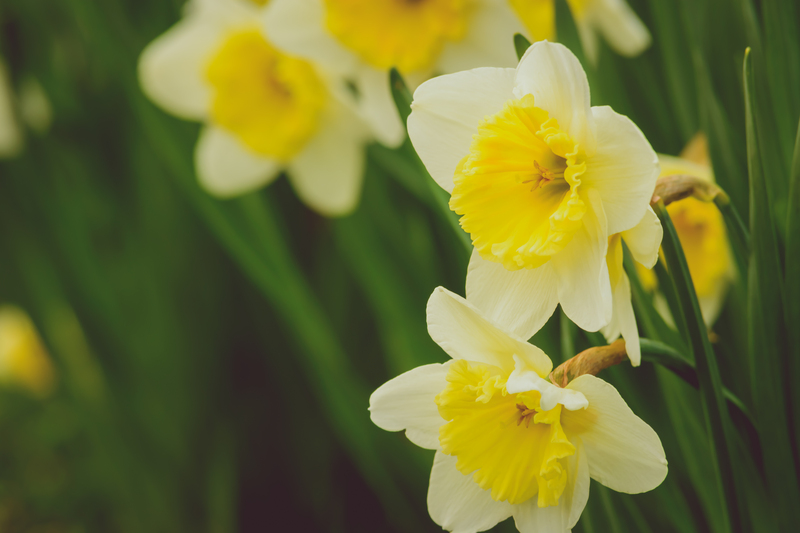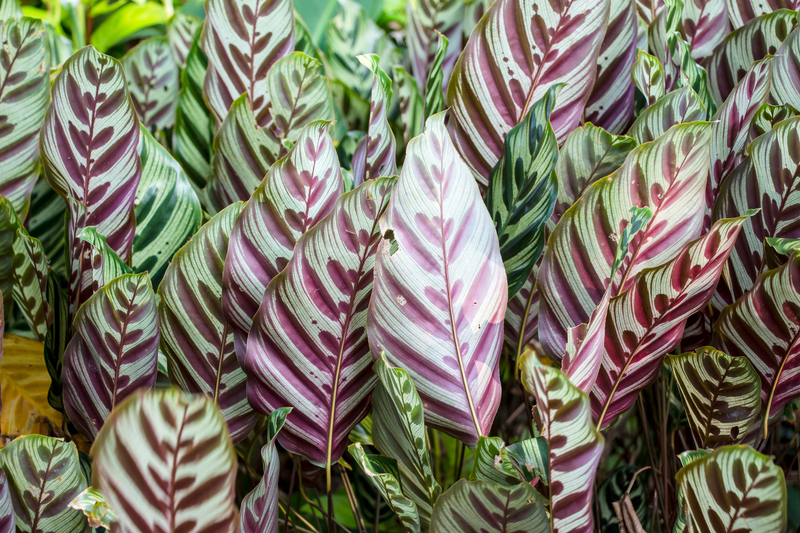Preserve Your Plants Through Winter's Harshness
Posted on 06/06/2025
Preserve Your Plants Through Winter's Harshness: A Complete Guide
As the chill of winter descends, dedicated plant lovers often worry about how their beloved greenery will survive the biting cold, frost, and relentless winds. Preserving your plants through winter's harshness is both an art and a science--requiring proactive measures, botanical know-how, and a bit of ingenuity. In this comprehensive guide, you'll discover expert strategies and practical tips for keeping all types of plants healthy, vibrant, and ready to thrive come springtime.

Understanding the Challenges of Winter for Plants
Before you can winterproof your garden or indoor plant collection, it's essential to understand why winter is so harsh on plants. The main threats include:
- Freezing Temperatures: Cold snaps can damage or kill plant tissues, particularly in non-hardy species.
- Frost and Snow Accumulation: Excess buildup can weigh down branches or lead to rot as it melts.
- Wind Desiccation: Dry, cold winds sap moisture from leaves and stems.
- Reduced Sunlight: Shorter days mean less energy for photosynthesis and growth.
- Water Stress: Soil may freeze, making water uptake difficult or impossible for roots.
- Pest and Disease Pressure: Some pests overwinter in plant matter, while fluctuating conditions can foster disease.
Preserving your plants during winter's severity involves addressing each of these challenges with targeted solutions, tailored to both your local climate and the type of plants you have.
Assess Your Plant Collection: Who Needs Winter Protection?
The first step in protecting plants from winter's harshness is a careful assessment. Not all plants require the same care--some are naturally equipped for cold, while others are more vulnerable.
Identify Hardy and Sensitive Species
- Evergreen Shrubs & Trees: Often hardy, but may need wind and sun protection.
- Deciduous Perennials: Usually drop leaves and enter dormancy, but roots need insulation.
- Tender Annuals and Tropicals: Highly sensitive; may need to be brought indoors or given substantial cover.
- Houseplants: Should be kept away from cold drafts and maintained in a stable environment.
Knowing which plants are vulnerable is crucial for devising your winter protection strategy.
Outdoor Plants: Preparing Your Garden for Winter's Wrath
M ulching: Nature's Insulating Blanket
Mulching is one of the most effective ways to preserve your garden plants through winter hardship. Organic materials like straw, bark chips, leaves, and compost can:
- Regulate soil temperature and protect roots from freeze-thaw cycles
- Retain soil moisture, reducing water stress
- Provide a haven for beneficial microbes
How to mulch: Apply a layer 2-4 inches thick around the base of plants, ensuring you don't pile it against stems or trunks to prevent rot.
Watering Wisely Before the Freeze
Although watering seems counterintuitive when temperatures drop, a well-hydrated plant is less likely to suffer damage. Water deeply before the first hard freeze to provide roots with enough moisture. Avoid watering frozen ground, as it can lead to ice that suffocates roots.
Creating Windbreaks and Covers
Harsh winter winds are notorious for drying out both foliage and soil. Consider these protection options:
- Install burlap screens, fencing, or plant windbreak hedges to shield sensitive plants.
- Use cloches, cold frames, or row covers for delicate vegetables and annuals.
- Wrap shrubs in burlap or horticultural fleece, especially evergreens prone to windburn.
Pruning: If and When to Cut Back
Not all plants benefit from fall pruning, so timing and plant type are important. For most woody plants:
- Remove dead/diseased branches in fall for tidiness and disease prevention.
- Avoid heavy pruning in late fall, which can stimulate new growth vulnerable to frost.
Container Plants: Special Care in Cold Weather
Potted and container-grown plants are more vulnerable to extreme cold because the roots have less earth to protect them. Here's how to shield your container plants during winter's harshness:
- Move pots against the house or under shelter to benefit from radiant heat.
- Cluster containers together for added warmth.
- Wrap pots in bubble wrap, burlap, or old blankets to insulate roots.
- Elevate pots slightly off the ground to prevent waterlogging and freezing.
Remember: Terracotta and ceramic can crack in freezing weather. Use frost-proof pots if possible!
Indoor Plants: Creating a Cozy Winter Retreat
Don't forget your indoor jungle! Preserving houseplants during winter's harshness requires adjustments, since indoor heating and low light can create stressful conditions.
- Keep plants away from cold drafts and radiators.
- Increase humidity with pebble trays, humidifiers, or regular misting.
- Reduce watering, as most houseplants' growth slows in winter.
- Clean leaves to maximize light absorption.
- Provide supplemental lighting if natural sunlight is scarce (LED grow lights).
Strong, healthy plants are more likely to survive the winter dormancy period and put on robust new growth when longer, sunnier days return.
Greenhouse and Cold Frame Strategies for Winter Plant Survival
If you're fortunate enough to have a greenhouse or cold frame, these are invaluable for protecting plants from winter's harshness. Here's how to maximize their effectiveness:
- Seal gaps and repair any broken glass or plastic sheeting to retain heat.
- Use water-filled barrels or thermal mass to stabilize nighttime temperatures.
- Install automatic vent openers to prevent overheating on sunny days.
- Insulate with bubble wrap or horticultural fleece for extra warmth.
A greenhouse extends your growing season and makes it possible to nurture young seedlings or shelter more tender specimens until the weather improves.
Specific Plant Types: Tailoring Your Approach
Evergreens and Conifers
These stalwarts retain their leaves or needles year-round and often face the harshest conditions. Preserve your evergreens through winter's harshness by:
- Watering deeply before freeze-up
- Shielding from winter sun and wind (sunscald and windburn are common problems)
- Applying anti-desiccant sprays to reduce needle and leaf moisture loss
Roses and Perennials
Protecting roses and perennials during harsh winters can mean the difference between thriving and dying back completely.
- Mound mulch or soil around the base of rose canes to insulate graft unions.
- Cut back dead stems but leave 6-8 inches of stalk to catch snow for insulation.
- Use rose cones or burlap wraps in particularly frigid regions.
Vegetable Gardens
Preserve your winter vegetable crops with simple measures:
- Install cold frames or hoop houses for lettuce, spinach, and kale.
- Use straw mulch or row covers to protect root vegetables in the soil.
- Harvest mature crops before a hard freeze to prevent losses.
Bulbs and Root Crops
Spring-flowering bulbs like tulips, daffodils, and crocus need to chill but not freeze solid. Preserve your bulbs through winter's harsh weather by:
- Planting at proper depth for your zone (deeper is better in colder areas)
- Mulching beds similarly to perennials
- Lifting tender bulbs (dahlias, gladiolus) after foliage dies back and storing in a cool, dry place indoors
Common Winter Plant Problems--and How to Fix Them
Frost Heaving
This occurs when soil freezes and thaws, pushing roots up out of the ground. Prevent it by:
- Mulching thickly to moderate soil temperature
- Fixing drainage issues, as standing water makes frost heaving worse
Winter Burn and Desiccation
Plants lose water through leaf surfaces on sunny, windy days when the soil is frozen and cannot replenish lost moisture. Solutions include:
- Wrapping or shielding plants (especially evergreens)
- Watering well during fall and mild winter spells
- Using anti-desiccant sprays
Mold, Rot, and Fungal Disease
Wet, poorly ventilated conditions encourage fungal growth.
- Ensure adequate air circulation (don't wrap too tightly)
- Remove dead or diseased material before winter
- Avoid mulching right up to stems
Embracing Native Plants and Natural Solutions
One of the simplest ways to minimize winter losses is to grow plants native to your climate. These species are naturally adapted to local extremes and require less intervention. Additionally, wildlife-friendly gardens sustain birds and beneficial insects, promoting ecosystem stability year-round.
- Native grasses and wildflowers often tolerate cold, wind, and snow better than Exotics.
- Provide habitat elements like leave piles or seed heads for overwintering birds and pollinators.
Spring Recovery: Helping Plants Bounce Back
Sometimes, despite your best efforts to preserve your plants through winter's hardships, there will be some dieback or winter injury. Here's how to support your garden's recovery:
- Wait to prune winter-damaged growth until the danger of frost is past--damaged tissue can insulate healthy parts.
- Fertilize moderately in early spring to avoid stimulating frost-tender new growth.
- Water deeply to encourage new roots and flush out accumulated salts.
- Assess for living buds and green tissue before deciding what to remove.
Summary: Your Winter Plant Protection Checklist
- Assess plant hardiness and local climate risks
- Mulch beds and borders
- Water deeply before hard freeze
- Shelter or relocate vulnerable container plants
- Use windbreaks, covers, and wraps as needed
- Maintain healthy indoor conditions for houseplants
- Inspect for pests, rot, and fungal issues regularly
- Plan for spring recovery
With a little preparation and care, you can preserve your plants through winter's harshness and enjoy a vibrant, thriving garden in every season. The effort you invest now pays off with lush, healthy growth and fewer losses when spring arrives!

Frequently Asked Questions: Safeguarding Plants in Winter
What's the best mulch for winter plant protection?
Organic options like straw, shredded leaves, bark, or wood chips provide excellent insulation. Make sure mulch is coarse enough to allow airflow but thick enough to prevent rapid temperature swings.
How do I protect potted plants from freezing?
Move pots to a sheltered area, wrap them for insulation, and elevate them off the ground. Use frost-resistant containers and avoid overwatering.
Should I fertilize my plants in winter?
Generally, no. Most outdoor and indoor plants are dormant or semi-dormant and do not need fertilization. Feed only when growth resumes, usually in early spring.
When is it safe to remove winter plant covers?
Remove covers once all risk of hard frost is gone, often after your region's last average frost date. Remove gradually on mild days to let plants reacclimate.
Conclusion: Embrace the Beauty and Challenge of Winter Gardening
While winter brings undeniable challenges, it also offers an opportunity to nurture your gardening skills, protect your landscape, and prepare for the abundance of spring. Preserving your plants through winter's harshness is an essential part of the gardening journey--one that pays off with healthy, resilient plants and the satisfaction of seeing your efforts flourish when the thaw finally arrives.
Remember: a little knowledge and preparation go a long way--start your plant protection today for a greener tomorrow.

